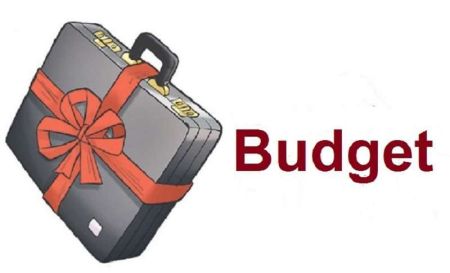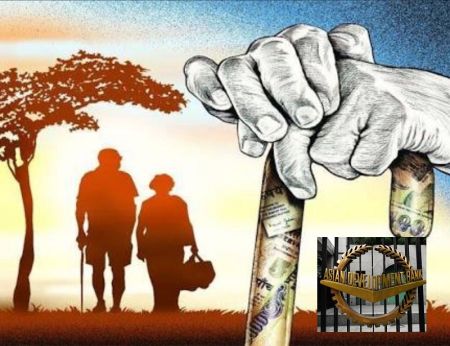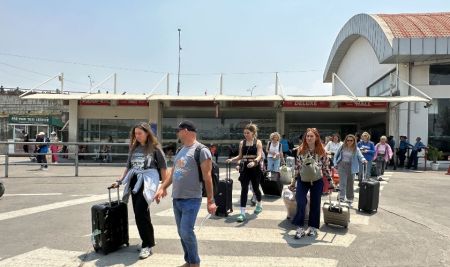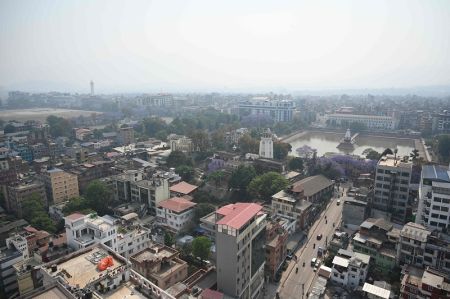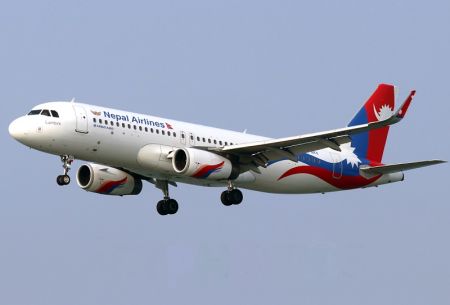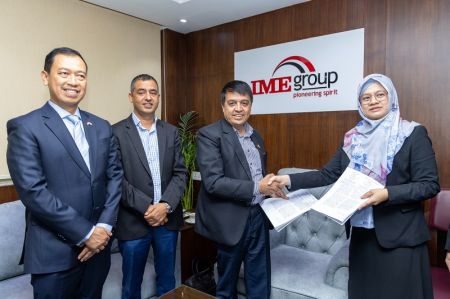“The higher the risk, the higher the potential return,” goes a popular saying. The economic logic is however that the profit is higher when risks are minimized. And there comes the insurance business to help the other businesses to reduce risks. In the process, both insurance companies and their business clients become happy. But this does not seem to be the case in aviation portfolio of Nepali insurance companies. Although aviation insurance is a high profile business in Nepal, it happens to be one of the weakest portfolios for most insurance companies in terms of profit. The aviation insurance business looks good in terms of premium collection but there is hardly any profit.
The reason is: the insurance companies providing aviation insurance have to pay a high amount of premium – more than 99 per cent at times - to the reinsurance companies abroad. In fact, the companies are sustaining their aviation insurance business from the commission they get for the premiums paid to the foreign reinsurers. Mahendra Shrestha, Managing Director of Himalayan General Insurance, says, “Whether it’s profit or loss, it goes to the reinsurance companies. We (local insurance companies) are just the intermediaries. And if we fail to reinsure, we cannot sustain the operation. So, we have to depend on reinsurance companies abroad. There is no other choice.”According to Shrestha, some insurance companies are paying up to 99.97 per cent of the premiums collected to the reinsurance companies. “It has been a non-profit business for even most of the reinsurers who have only two choices - walk away or keep doing business at high premium rates to recover previous losses,” he adds.
A three-year data (From 2009/10- 2011/12) of Beema Samiti, too, depicts the pathetic condition of Nepali insurance companies in aviation portfolio. During this period, only a few companies could make some profits which however, is paltry (See table 1). Rameshwor Thapa, President of Airlines Operators Association of Nepal (AOAN), says, “Since this is a highly regulated and risky business, there can be loss or profit and the clients also contribute in both these factors.” There are altogether 25 insurance companies including 17 non-life insurance companies in Nepal. Among the non-life insurance companies, seven deal in aviation insurance (See table 2). Nepal insurance Company Ltd and Neco Insurance which were doing aviation insurance previously have pulled their hands from aviation portfolio now.
Lack of domestic reinsurance companies and low retention capacity of Nepali insurance companies has resulted in huge amount going abroad as remittance premium. The Nepali airlines are paying around USD 8-9 million premiums to the insurers yearly. The Nepali insurance companies retain 0.5 per cent of this and send the rest to the reinsurance companies.
Dip Prakash Panday, CEO of Shikhar Insurance, says, “The way our aviation business has been exposed, we cannot afford the risks. Who will bear the risk if some big loss occurs?” Panday asks, adding, “We are not sending money, we are transferring the risk. The companies are still in profit because the money is flowing in from the reinsurers abroad as commissions. Since they agreed to take the risk, they bear the loss as well, when it happens.” Shikhar Insurance, one of the major players of Nepal’s aviation insurance business earned Rs 10.5 million as reinsurance commissions last year.
Airlines insure their fleet according to the value of the aircraft. The reinsurers charge different premiums depending on the type of aircraft, experience of the pilots and engineers, infrastructure, equipment, management facilities and age and the value of the aircraft. Aviation insurance coverage is categorized into the following types: Hull, War, Allied, Perils Insurance, Third Party Liability Insurance, In-flight insurance, Passenger liability insurance etc. The passengers are insured at USD 20,000 each and crew member at USD 40,000 each while the coverage of other categories like hull, war etc varies from airline to airline. According to the operators, the reinsurance market in Nepal was dependent on the India for a long time since it started in the early 1960s. In recent times however, as both the risk and the premium witnessed a constant upsurge, the market shifted to Europe. Indian Insurance companies like GIC, ICICI Lombard, United India and IFFCO-TOKIO were the main reinsurance partners of insurance companies previously, but the number of Indian reinsurers who do reinsurance business in Nepal has decreased over the past few years.
High Premium
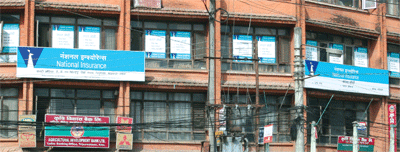
After the 9/11 terrorist attack in the US in 2001, where two planes - American Airlines Flight 11 and United Airlines Flight 175 - were crashed into the North and South Trade Towers, the aviation sector saw a sudden rise in premiums globally. After the incident, most of the reinsurers increased their premium rates worldwide while others loaded the premium according to the risk factors. Nepali airliners are charged up to 12 per cent premium now while airliners generally pay 4-6 per cent internationally. Previously, the premium rate for Nepal was up to 7 per cent. Thapa says, “We used to pay USD 30,000 as premium as early as six years ago. Now we have to pay USD 300,000 for the same aircraft – 10 times more than the premium rates in the past.” Currently, Tara Air and Agni Air are paying up to 12 per cent premium. However, Panday says that the premium rates differ from airline to airline. He says, “It is not that all airlines have to pay a high premium. The premiums of some airliners are as low as 1.5 per cent.”
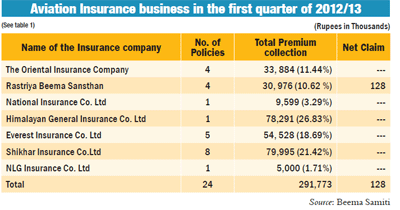
There are many conditions when the reinsurers charge high premium. They charge more if they discover that the airliners have had an air accident in the last five years or have a high frequency of making claims. Prem Bahadur Maharjan, Chaiman of Rastriya Beema Sansthan (RBS), says, “The risk factor is not within our control and that needs to be reinsured with other international insurance companies outside the country.” Decrease in the number of airlines due to the crashes and age of the aircraft lead to also high premiums. Prof Dr Fatta Bahadur KC, Chairman of Beema Samiti, says, “We had had the normal rates. But when one reinsurer increases the premium rate, others follow suit. Now the weakest airliners have to pay dearly while others too are paying high charges.”
As Nepali aviation insurance is serviced by the international reinsurance market, rising premium rates is affecting the sustainability of the business. As the risk increases the market becomes limited and the airliners have no choice but to accept the high premium rates. Kewal Krishna Shrestha, CEO of Everest Insurance says, “The aviation business is running though the reinsurers are charging up to 12 per cent. But what if they charge 20-25 per cent? I don’t think the aviation industry in Nepal could bear such high premiums.” He says the environment in future could be such that even the high premium might not draw the reinsurers into confidence because of the high risk involved in the Nepali aviation and that the reinsurers could add more clauses which could affect the overall aviation business in Nepal.
The reinsurers, however, insist that the premium is always determined by the risks anywhere in the world. According to Dr Pronab Sen, CEO of Nepal operation of National Insurance Company, the government-owned insurance company of India, the premium is based on the past losses. He says, “If you see the statistics, almost every year there is a crash and sometimes, there are 2 crashes in Nepal. And the rate of premium is governed by the reinsurance market. Because of the air accidents, some of the reinsurers were hesitant to do business in Nepal.” Sen adds, “We have our own retention limit. Depending on our financial strength, we retain a very small portion of the risk and reinsure the rest with other reinsurance companies. This is a worldwide practice in the insurance business. It depends on portfolio and risks. Sometime we retain 20 to 80 per cent- sometimes 90- depending on the risks.” Doug Horne, Marketing and Business Development Manager at Airclaims- A UK-based leading reinsurance company, shares a similar experience. He says, “The present level of risk is too high but there are enough insurers willing to support the market, albeit currently at a higher cost than in some other places.”
The Risky Rural
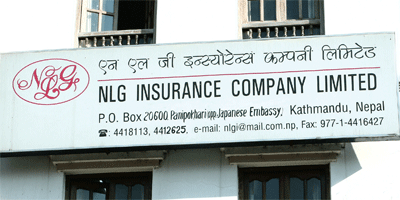
The airlines which fly mostly in the hilly region are among the high premium paying ones. On the trunk routes, the premium is only around 3-4 per cent and in the case of STOL (Short Take Off and Landing) runways, the premium rate varies from a minimum 3 to a maximum 12 per cent. Due to the risk in rural areas, the reinsurers load more premiums on them. According to the operators, the aviation insurance started becoming a loss-making business for reinsurers since 2009. There have been eight aviation crashes, killing 114 people in the past six years. Almost all these accidents took place in the hilly region. Of them, six deadly accidents occurred in 2011 and 2012 alone, excluding four helicopter crashes of which a couple were fatal. Being a mountainous country, the weather, terrain and the high altitude in the hilly region are the major challenges for the aviation sector. Poorly managed and small airfields, unpaved runways and lack of manpower to co-ordinate pilots in these areas are considered the reasons behind the air crashes. An aviation expert, requesting anonymity, says, “We need pilots who are well trained and have a sound understanding of weather pattern, especially clouds.”
.gif)
The emergence of private airliners in domestic air transport started in 1992 when Nepal adopted a liberal aviation policy. And in 2002, expansion of the International Terminal Building at Tribhuwan International Airport (TIA) and the construction of a new Air Cargo Complex made it convenient for the international airliners to operate in Nepal. This increased the flow of international tourists in Nepal. Increased tourist arrivals, in turn, have led to a growth in the aviation business and aviation insurance business too. This is why the aviation insurance business has grown over the past decade. There are 10 fixed-wing airplane operators and five helicopter operators in Nepal at present. The Civil Aviation Report 2011-2012 also depicts a steady growth in the aviation sector with increasing flight movement.
There are altogether 54 airports in Nepal. Among them, 34 are operational at present. Among the running airports, eight are on the trunk routes- while the rest are in the remote areas. Thapa says, “Trunk route operators have fewer problems in comparison to the STOL route operators mainly because of the high hills and high altitude. There have been many instances of chopper accidents on the STOL routes.” Airports in Pokhara, Biratnagar, Janakpur, Nepalgunj, Bhairahawa, Kathamandu, Dhangadi and Chandragadhi are on the trunk route. The domestic aircraft which fly in trunk route have a minimum seat capacity of 15 and a maximum of 72 while the planes in STOL routes have minimum seat capacity of 9. Big aircraft fly on the trunk routes while the small ones are considered best for the hilly region. Suresh Acharya, Joint Secretary at Ministry of Tourism and Civil Aviation (MOTCA) says, “There is a high risk on the STOL route especially for twin-otters. There is an urgency to enhance the capacity of the pilots who fly on the STOL routes. ”
Bad Image
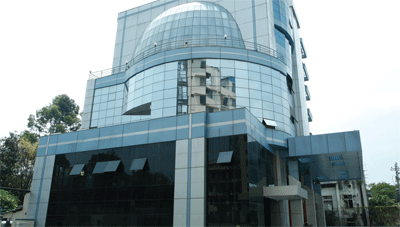
The frequency of accidents has created fear in the reinsurers’ minds, pushing Nepal into a ‘risk zone’. These accidents could have negative impact on the country’s tourism if the casualties included many foreigners. Nepali aviation sector had gone through similar hard times in the past too. Ten years ago when Maoist combatants set ablaze Fishtail Air’s helicopter in western Nepal, domestic airliners got notification from the reinsurance companies abroad that they won’t compensate the losses in case of any terrorist attack. Panday says, “Fear is a very dangerous thing. Our terrains are difficult, which has sent a wrong perception. Similarly, loss is also a perception and can be changed. All we need is 3 to 4 years of good loss ratio.”
The domestic airlines are often accused of poor maintenance of their airplanes and the pilots of not following the standard operation procedures. Similarly, it is said that there is often a lack of co-ordination between the captain and co-pilots. Acharya says, “According to our findings, human factor is responsible for 80- 85 per cent accidents. The remaining 15 per cent accidents are caused by failure of machine, bad weather etc. It seems that the pilots are not very efficient at taking the right decision in time of emergency or they do not make the maximum use of the cock-pit. Lack of co-ordination between pilots and co-pilots and no guidance from the ground people when the plane is flying is common.”
Lack of consultation between the government and insurance authorities for resolving the key issues of the aviation sector has made the aviation business worse. Acharya says, “The government is unaware about the kind of image the reinsurance companies are making of Nepal. They should have believed the government’s aviation report.” He further adds, “We need to develop that kind of mechanism. We are ready to help whenever they need any support from the government. All we need to do is build that kind of mechanism where the government as well as the insurance companies could sort out the problems together.”
The use of ‘old’ aircraft by some domestic airlines has only added to create a negative image of the Nepali aviation, though people in the industry and experts do not call it a problem. According to a Nepali scholar who has a Master’s degree in Aeronautical Engineering from Poland, not following the standard operation procedures by the aviation operators is the major drawback in Nepal’s aviation. He says, “It does not matter whether the plane is old or new; what matters is its scheduled as well as need-based maintenance.” Lack of distance measuring equipment (DME) at airports is another shortcoming for the country’s aviation sector. He adds, “Towers are more helpful in tracking the aircraft in the right way. However, most of our airports rely on windsocks to indicate wind direction and the relative wind speed. This is risky. Sometimes, there is no one in the towers at the airports to coordinate with the flying pilots.”
An aircraft is generally considered safe until the deadline given by its manufacturer. There is a manual for every air plane and manual for flying hours including number of flights a day. The Beema Samiti issues, renews, dismisses the licenses of insurance companies, insurance surveyors and insurance agents. It has also been “working for the development, management and regulation of the insurance business in the country.” The BS 2067 Report of Beema Samiti has also recognized scarcity of skilled manpower, unhealthy competition among insurance companies and lack of reinsurance companies within the country as the major problems of the aviation insurance business. However, the Beema Samiti has not been able to address these problems properly. Maharjan says, “There has to be a strict monitoring mechanism for air traffic discipline and safety education to the people involved in the aviation business. Pilots should also be alerted against taking any sort of risks. Aviation safety is not related to money only; it’s about lives of people.”
The Way Forward
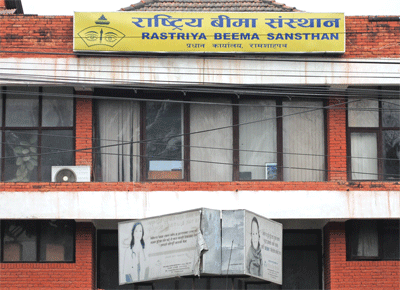
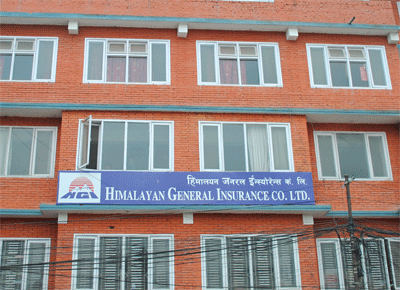
Mergers among insurance companies to increase capital base is regarded as one of the possibilities for enabling the insurance companies financially. The insurance companies are also trying to increase their retention capacity from 0.5 to 1 per cent which has spread positive message to their clients. There have been many progresses in Nepal’s aviation sector. From the month of Kartik, this year; Tourism Ministry has revised the provision of compulsory payment of 60 million dollar in third party liability to airliners during the registration time. CAAN has subsidized up to 8 million dollar to the airlines that fly to rural areas. An agreement was signed between the Government and CAAN for Capacity Enhancement Project of TIA under ADB loan in 2010. A safety audit was carried out in Nepal from 5 to 14 May 2009 according to the Universal Safety Oversight Audit Program (USOAP) as provisioned by ICAO and the Corrective Action Plan based on the flight safety. The findings of the audit have already been submitted to ICAO. Furthermore, a provision has been made to perform all activities in congruence with the concept of ICAO USOAP Audit Continuous Monitoring Approach (CMA).
Tri Ratna Manandhar, Director General, CAAN says,” We have followed international standards in safety measures and the maintenance of aircraft is carried out as per the European standards- EASA Part-145. Buddha and Yeti airlines have already started it and others are in the process.” According to him an ICAO team is visiting Nepal in July 2013 for audit. He says, “After this ICAO audit, we will be able to prove that we have made progress in aviation management including the safety.” CAAN has been conducting strict safety programmes for safety and maintenance for the past six months. Likewise, the board of CAAN approved Air Operator’s Requirement (AOCR) in November 2012 which clearly mentions the requirements to get Air Operator Certificate. It has also managed the maintenance of aircrafts by AMT (Aircraft maintenance technician) from UK from this year. It is also planning to build an isolated parking for the planes having bomb threats and hijacking etc next year.
No compromise at all with safety could be the best way to lower the high premium in Nepal’s aviation insurance, say the experts. The airline operators, too, are more aware about maintaining the safety standards today than in the past. AOAN has been organizing many seminars on aviation and programmes to help lower the premium by assuring safety. Thapa says, “There have been programmes organized aimed at enhancing the safety measures and we are very much confident that we would be able to enhance the safety measures.” He adds that airline operators are optimistic about reducing the risks. “A plane using only the Visual Flight Regulation (VFR) should not be allowed to go through the clouds. Pilots too should stop flying in pressure. If we follow all the safety measures definitely the risks have to go down. Civil Aviation Authority of Nepal (CAAN) should monitor these flights and instruct the airlines accordingly,” He says.
Experts also feel the need of terrain awareness and warning systems (TAWS) developed by manufacturers and safety regulators to prevent accidents from Controlled Flight into Terrain (CFIT). CFIT is among the leading causes of airplane accidents involving the loss of life worldwide. The Wikipedia describes it as an accident in which an airworthy (fit to fly) aircraft, under pilot control, is unintentionally flown into the ground, a mountain, water, or an obstacle. With improvements in infrastructure, training and operations, reinsurers are also optimistic in reducing the cost of insurance to a reasonable level. Horne from Airclams says, “The prospects for aviation insurance business in Nepal are bright. There is a capable and knowledgeable local market which has good relationships with the global insurance community.” He adds, “What is perceived as the current high cost of insurance can and should be reduced for operators who demonstrate a good safety culture and record, adopt a Safety Management Programme that is working well and can prove that it is making a difference.”
While the formation of a pool of all the insurance companies to collectively handle the claims in aviation insurance is in the initial phase, the government is planning to convert the insurance pool into a reinsurance company under Beema Samiti. Ramesh Lamsal, Executive Director of Insurance Pool says, “We have not prepared the business plan about aviation insurance yet. But if the aviation segment is included it will support the aviation business in Nepal.”
Government authorities say that if the main players in the aviation business in Nepal- the airliners and insurance companies prepare appropriate strategy for the safety measures they are ready to co-operate insurance companies and protect them from those risks. Dr. KC says, “There should be positive attitude towards the formation of possible reinsurance company in Nepal after calculating the advantages and disadvantages on the business. The foremost thing is that it should be for the stability of the aviation business.”
Nepal’s First Aviation Insurance Summit Held
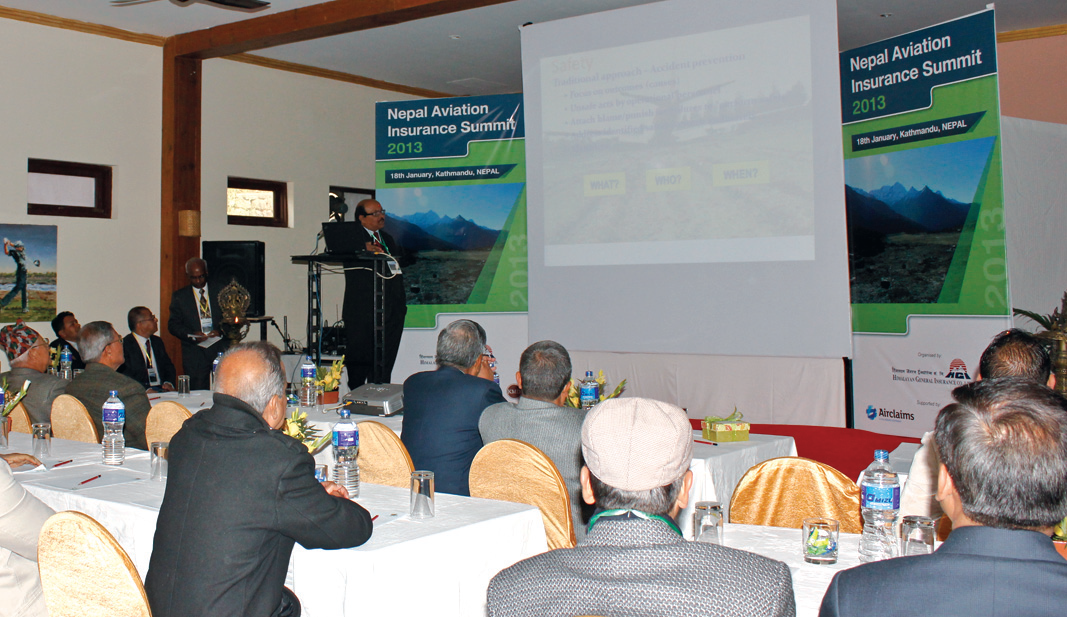
In January, an ‘Aviation Insurance Summit’ was held in Kathmandu where all the stakeholders including the reinsurance companies participated. The summit brought about a fresh wave of optimism in Nepal’s aviation insurance sector. Mahendra Shrestha, MD of Himalayan Insurance, who was also in the organizing committee says, “The Summit brought local stakeholders, including operators, regulatory bodies, insurance companies and banks as well as key players in the regional and global aviation insurance industry including underwriters and reinsurance brokers under one roof. It gave the Nepali stakeholders a global perspective on our current situation as well as access to the expertise of visiting delegates.” He further adds, “After the summit, all the delegates expressed that they found it to be a helpful introduction to the Nepal aviation insurance market and that it helped them take better decisions about supporting it.”






